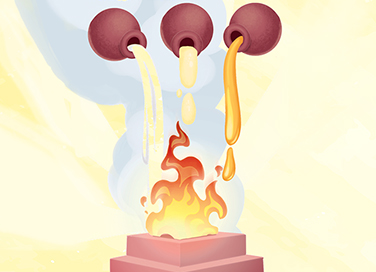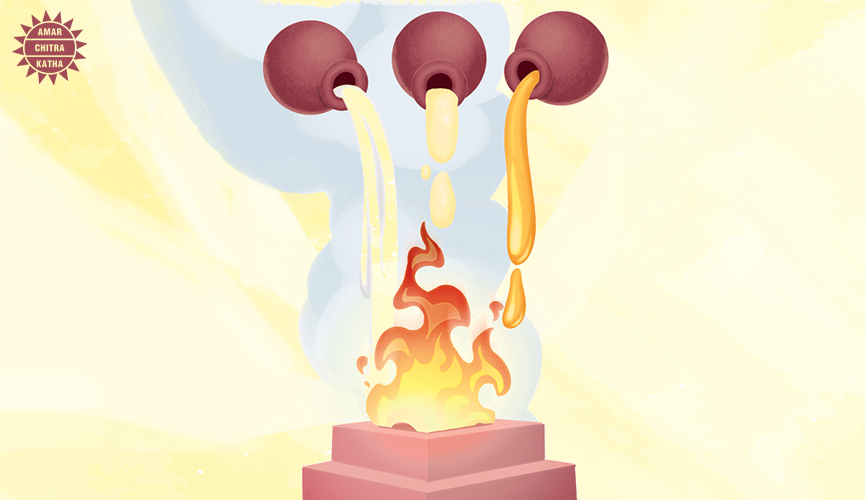The Vedic Sacrifice
- February 1, 2023


The Vedic Sacrifice
- February 1, 2023

The ritual of sacrifice was central to the religion of the Vedic times. At its core was the belief the gods required to be propitiated with offerings. These were to be given as prescribed in the ancient Vedic sacred texts. Once this was done, then the gods would reward the patron or the organiser of the sacrifice with wealth, children, cattle, health, happiness and all manner of good things.
The ‘sacrifice’ consisted of offerings of milk, ghee (clarified butter), honey, fruits, an intoxicating drink called Soma, and cooked dishes both sweet and savoury. In ancient times, animal sacrifice was also quite common.
To receive more such stories in your Inbox & WhatsApp, Please share your Email and Mobile number.
These offerings were sent to the gods ritually through the medium of the yagna. The purohita (priest) would invoke the name of the deity and chant the appropriate mantra from the Vedas, and then make the offering into the fire called Havan. The ritual remains the same even today. Of course, in most yagnas, only a token offering is made into the fire. Perhaps in olden times, the yagnas were on a larger scale and litres of milk, ghee and kheer were poured into the Havan!
All gods, big and small, were summoned to the yagna by the priest, and given their share of the sacrifice according to their status in the divine hierarchy. Agni, the God of fire, carried the oblations to the gods. After the gods received their share, all those who attended the ceremony would receive theirs, most likely in the form of a delicious feast.
Many myths focus around the incident of a yagna near that went awry, because a deva or sage was slighted on the occasion, leading to a terrible fight. This is what happens in the main story of the Shiva Purana, when Prajapati Daksha uses the occasion of a yagna to convey his displeasure of Shiva.
To receive more such stories in your Inbox & WhatsApp, Please share your Email and Mobile number.

Comic of The Month
Dr Kotnis in China
In 1938, twenty-eight-year-old Dr Dwarkanath Kotnis was part of a medical mission that India sent to aid China in its war with Japan. Dr Kotnis was committed to saving lives, even in the precarious war-time situation. He remained behind to continue his work in China after the rest of his group returned. He was, and remains, a selfless and fearless hero to the people of China and India alike.